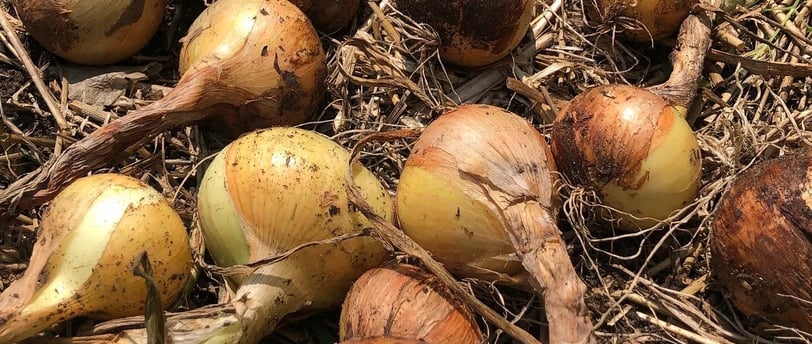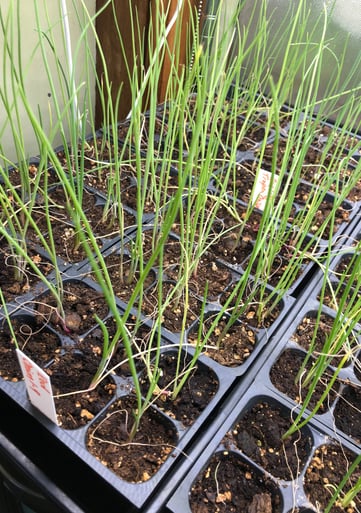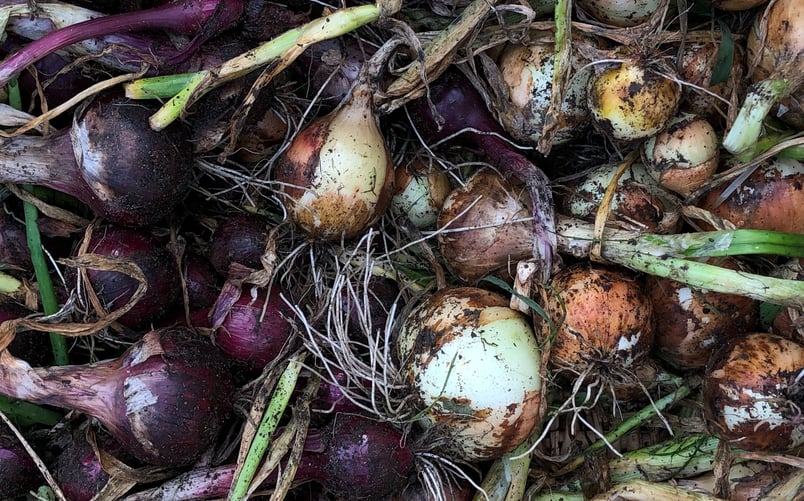Time to Start Your Onion Seeds: A Fun Reminder for Home Gardeners
It's that time of the year again when we get to start our onion seeds for the home garden. Whether you're a seasoned gardener or just starting out, growing onions from seeds can be a rewarding and fun experience. So, let's dive in and get those onion seeds ready for planting!
ONIONSSEED STARTING
Alexa Sandella
1/12/20243 min read


Hey there, garden friends! It's that time of the year again when we get to start our onion seeds for the home garden. Whether you're a seasoned gardener or just starting out, growing onions from seeds can be a rewarding and fun experience. So, let's dive in and get those onion seeds ready for planting!
Why Start Onion Seeds?
Starting onion seeds allows you to have a wider variety of onion types to choose from compared to buying onion sets or transplants. Plus, it's a cost-effective way to grow onions since seeds are generally more affordable than sets or transplants.
Northern gardeners will benefit the most from choosing Long Day variety of onions. Southern gardeners should choose Short Day varieties. Watch for these terms when buying your seeds.
When to Start Onion Seeds?
Timing is everything when it comes to starting onion seeds. Ideally, you want to start them indoors about 8-10 weeks before you transplant them outdoors. Then it will take another 90-110 days for the onions to fully mature. Because of this long growing season northern gardeners benefit from starting onion seeds during the winter months to get the earliest harvests. This gives the seeds enough time to germinate and grow into sturdy seedlings before they're ready to be transplanted outdoors.
How to Start Onion Seeds?
Starting onion seeds is relatively easy, even for beginners. Here's a step-by-step guide to get you started:
Choose a well-draining seed starting mix or make your own by combining equal parts of peat moss, vermiculite, and perlite.
Fill seed trays or small pots with the seed starting mix and lightly tamp it down.
Sow the onion seeds on the surface of the soil, spacing them about half an inch apart.
Gently press the seeds into the soil, but don't bury them too deep.
Mist the soil with water to keep it moist, but not soggy.
Place the trays or pots in a warm location with indirect sunlight.
Keep the soil consistently moist by misting it regularly.
Once the seedlings have grown to about 4-6 inches tall and have developed a few leaves, they're ready to be transplanted outdoors. You can cut the greens back and eat them as chives if they start to get too tall. This will encourage more growth and a sturdier plant.
Transplanting Onion Seedlings
Before transplanting your onion seedlings, make sure to harden them off by gradually exposing them to outdoor conditions. This helps them adjust to the temperature and reduces the risk of transplant shock. To harden off place your tray of seedlings outdoors for 1 hour the first day and bring back indoors. The second day leave them out for 2 hours. Keep repeating this and adding 1 hour each day for 5 full days.
Onions can generally be planted outside before the last frost date in early Spring as they are cool weather crops. If temperatures are consistently above 32 degrees Fahrenheit you can go ahead and transplant them.
Choose a sunny spot in your garden with well-draining soil. Dig small holes or furrows and space the seedlings about 4-6 inches apart. Gently place the seedlings in the holes, cover their roots with soil, and lightly firm it around them.
Remember to water your newly transplanted onion seedlings regularly, especially during dry spells. Onions need consistent moisture to develop healthy bulbs.
Final Thoughts
Starting onion seeds for your home garden is a fun and rewarding experience. From choosing your favorite onion varieties to watching them grow from tiny seeds into delicious bulbs, it's a journey that connects you with nature and the joy of growing your own food.
So, grab those onion seeds, get your hands dirty, and let's make this gardening season a memorable one. Happy planting!




